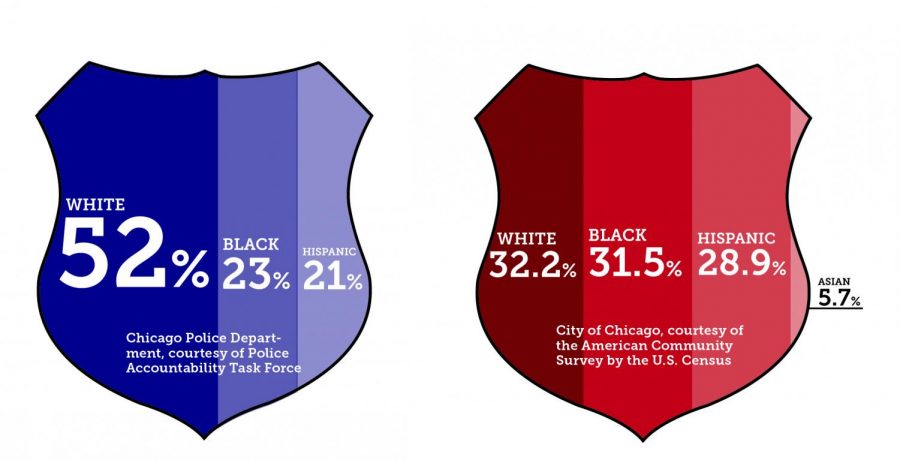Activists share doubts on CPD’s diversity outreach
Activists share doubts on CPD’s diversity outreach
December 5, 2016
In an effort to increase diversity in the Chicago Police Department, the city will increase outreach and create a recruitment campaign to encourage more minority individuals to apply for CPD’s April 2017 entrance exam, according to a Nov. 22 press release from Mayor Rahm Emanuel.
“I have people in minority communities always asking, ‘Can we have more officers in our community that look like us?’” said CPD Superintendent Eddie Johnson when he presented the department’s new Use of Force policy Nov. 29, as reported on the Front Page. “If you want to be part of the change, take the [entrance exam], come on to the department and I will put you in that neighborhood.”
To market this campaign, called Be the Change, Chicago has partnered with the Brown Farmer Media Group, a minority- and woman-owned communications firm, according to the press release.
“We look forward to working closely with key [local] organizations to reach diverse communities and help spread the word,” Deborah Olivia Farmer, president of BFMG stated in the press release.
Both BFMG and city representatives did not respond for comment as of press time.
Rev. Christopher Griffin, a member of the Community Renewal Society—an organization that advocates for social justice—said a balance of racial and ethnic backgrounds in the police department is necessary, and the demographics of the department should reflect the city’s.
According to the 2014 American Community Survey, Chicago is 32.2 percent white, 31.5 percent black, 28.9 percent Hispanic. In comparison, CPD was 52 percent white, 23 percent black and 21 percent Hispanic in 2014, according to an April 2016 report from the Police Accountability Task Force. CPD did not provide official data as of press time.
Damon Williams, co-founder and co-director of the #LetUsBreathe Collective—an activist organization seeking police accountability and political reform—said a more diverse police force could make trust issues between the community and CPD worse because it can subdue public criticism.
“Putting black and brown faces into a violent and racist system is a method to validate and protect [those in power],” Williams said.
According to CPD’s website, the entrance exam is scheduled to take place April 1–2 at McCormick Place, 2301 S. King Drive. Applications, due Jan. 31, will require applicants to be 18 years of age by April 30. They are also required to have 60 semester hours from an accredited college or university, three years of active military duty, or a combination of the two.
CPD is planning to hire 970 police officers over the next two years—as reported Sept. 26 by The Chronicle—and, to encourage more applicants to take the hiring test, the city has increased accessibility. The previously required $30 fee has been waived, and an opt-in text and email reminder to keep candidates engaged during the recruitment period will be provided, according to the press release.
Griffin said he does not think increasing diversity within CPD addresses the department’s issues entirely, but it could benefit cultural awareness and sensitivity. He said improving diversity within the police force would allow other officers to interact with different races and cultural groups, which could create a stronger understanding toward them.
“[Diversity] brings some good things to the table, [however], it is just one of those steps,” Griffin said.
Griffin said because of the miscommunication and distrust between the African-American community and the police, both sides should reach out, but it should start with the police. Police used to attend neighborhood gatherings, according to Griffin, adding that he would like to see more of that today.
“On every police car, [it says], ‘serve and protect,’” Griffin said. “Serving goes beyond just responding to a 911 call.”
Williams acknowledged CPD’s outreach efforts and said it is better to have a more diverse police force rather than a homogeneous one. However, he added that instead of hiring more police, Chicago and the nation should invest those resources in other areas, such as education and job creation.
“It is difficult and frustrating when the conversation of policing shifts away from the structural problems and violence that police have upheld,” Williams said.








